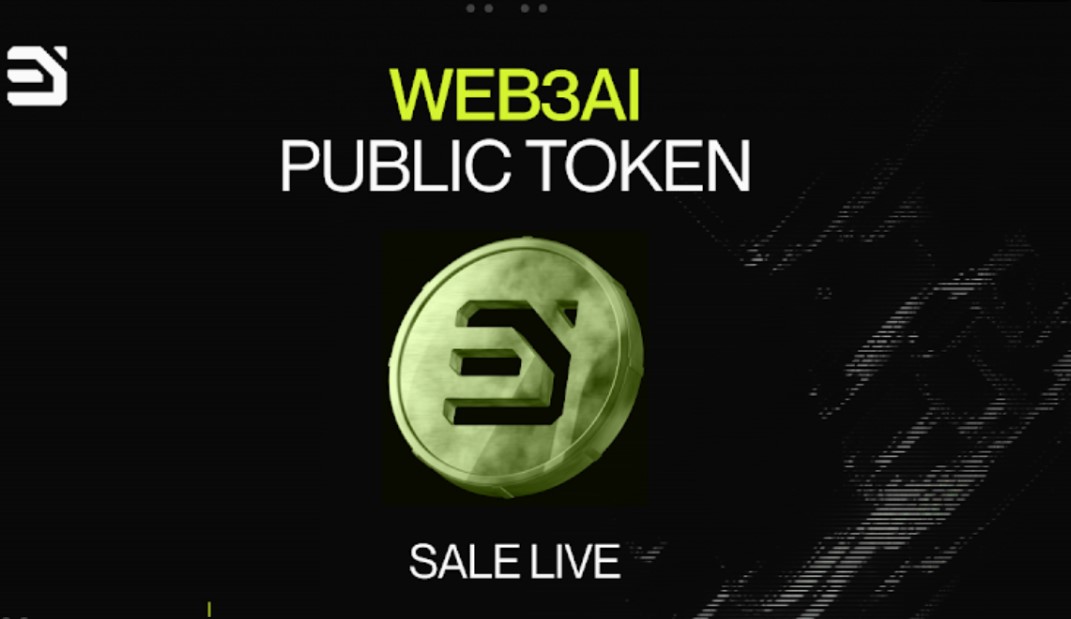In the early days of the internet, the dream was simple: a decentralized, open, and user-owned web. Fast forward to today, and that dream seems dominated by a handful of tech giants, Google, Amazon, Meta, Apple, and Microsoft, often referred to as “Big Tech.” But now, a new vision is taking shape, led by the Web3 and cryptocurrency movement. Moreover, companies are looking to launch the Best Presale Crypto Coin as it will empower them and rebuild the internet’s original ideals with cutting-edge blockchain technology.
What is Web3?
Moving ahead, Web3 refers to the third generation of the internet, built on blockchain technology. Unlike Web2, which centers on platforms owned and operated by corporations, Web3 aims to decentralize control, giving users ownership of their data, identities, and digital assets.
Supporters argue that Web3 can shift power away from tech monopolies, breaking the control that Big Tech exerts over information, infrastructure, and user behavior.
The Allure of Web3
The promise of Web3 is rooted in three key principles:
Decentralization – No single entity has full control over a network or application.
Ownership – Users can own digital assets and identities via cryptocurrencies and NFTs.
Transparency – Open-source code and publicly verifiable data foster trust.
These features address many of the criticisms of Big Tech: privacy violations, data monopolies, algorithmic opacity, and censorship. In theory, Web3 offers a democratized, censorship-resistant alternative.
The Power of Big Tech
But competing with Big Tech is no small feat. These companies wield immense power, thanks to their:
Massive user bases – Billions of people use services from Google, Facebook, Amazon, and others daily.
Financial resources – Apple and Microsoft are trillion-dollar companies with deep war chests.
Data dominance – Years of data collection give them unmatched insights into user behavior.
Ecosystem control – They own the platforms, app stores, hardware, and cloud infrastructure.
This control creates a self-reinforcing loop. For example, Apple can prioritize its own apps on iPhones, while Google controls search results and advertising across the web. Competing against that means rebuilding the internet’s infrastructure from the ground up—no easy task.
Where Web3 Is Gaining Ground
Despite the odds, Web3 has seen notable traction in certain areas:
DeFi (Decentralized Finance): Platforms like Uniswap, Aave, and Compound have built decentralized alternatives to traditional financial services, reaching billions in total value locked (TVL).
NFTs and Creators: Web3 has empowered artists and creators to monetize their work directly, bypassing platforms like YouTube or Instagram.
DAOs (Decentralized Autonomous Organizations): These are community-led organizations governed by smart contracts and token holders, challenging traditional corporate structures.
Identity and Data Ownership: Projects like Lens Protocol and Ceramic aim to let users control their digital identities across the web.
These use cases show that Web3 can create viable alternatives to centralized platforms, especially where users are motivated by transparency, sovereignty, or financial incentives.
The Hurdles Ahead
Still, Web3 faces major challenges before it can truly compete with Big Tech:
User Experience: Web3 interfaces are often clunky, confusing, and slow compared to the seamless polish of Big Tech platforms.
Scalability: Blockchain networks struggle with high fees and slow transaction speeds, although innovations like Layer 2 solutions are improving this.
Security and Regulation: Hacks, scams, and regulatory scrutiny remain significant threats.
Mainstream Adoption: Most internet users don’t yet see a compelling reason to switch from familiar, centralized apps.
Moreover, the speculative nature of crypto markets can taint Web3’s credibility. Many associate it with pump-and-dump schemes, not paradigm-shifting technology.
Big Tech Isn’t Standing Still
It’s worth noting that Big Tech isn’t ignoring the Web3 movement. Meta is building its own metaverse. Microsoft has shown interest in blockchain-based identity solutions. Google Cloud offers Web3 services. These companies may not want to dismantle their empires, but they are hedging their bets, investing in or integrating Web3-like features to stay relevant.
In a twist of irony, the very companies that Web3 aims to disrupt may end up co-opting its most promising technologies.
Coexistence or Competition?
Rather than a head-on collision, a more realistic future may involve coexistence or even hybrid models. Just as open-source software didn’t destroy Microsoft or Google but reshaped their strategies, Web3 might not topple Big Tech but could push it toward more user-centric models.
We may see blockchain-based identity systems integrated into mainstream apps, or decentralized finance protocols powering back-end services for consumer-facing apps. Web3 could become the infrastructure layer while Big Tech continues to control the interface and experience.
Conclusion
Coming to the end, it’s unlikely Web3 will “replace” Big Tech anytime soon, but it’s already influencing how we think about digital ownership, governance, and decentralization.
The more immediate impact of Web3 may not be in toppling giants, but in building parallel ecosystems that offer users real alternatives and forcing Big Tech to evolve in response. The internet’s future may be neither fully decentralized nor fully monopolized, but something in between.



